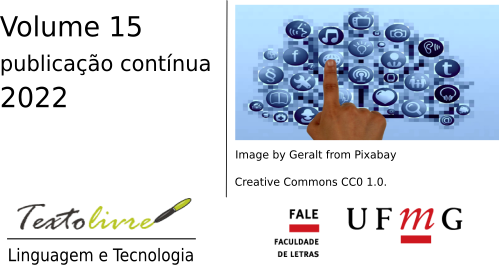SEM model in neuromarketing as a planning tool in higher education
DOI:
https://doi.org/10.35699/1983-3652.2022.40501Palabras clave:
Neuromarketing, Educational marketing, Strategic planning, SEMResumen
The purpose of this research is to analyze the relationship between marketing, neuromarketing and strategic planning at the university level. This study is based on a quantitative methodology with an interpretative paradigm, through a non-experimental, transectional, explanatory, descriptive and correlational research design. For this purpose, a Likert scale was elaborated for 616 students and graduates of the careers offered at the 25 de Mayo Campus of the Universidad Columbia del Paraguay. The analysis was carried out through a Pearson's r correlation, a descriptive analysis and an exploratory factor analysis (SEM), concluding that it is necessary to develop educational marketing actions with different approaches to the current ones. If the educational institution wants to be competitive, it has to strengthen actions to attract potential students through techniques that are competitive in today's society, and that is where neuromarketing comes in. The SEM model allows us to conclude that there is a relationship between university, educational marketing, neuromarketing, quality higher education and strategic planning, highlighting that strategic planning is the key to quality higher education, and that in the educational field marketing should be based on neuromarketing, although it is not yet an indicator of quality higher education.
Descargas
Citas
BARCO, E. A.; GARRO, L. L. Neuromarketing and advertising for emerging small businesses in the Gamarra commercial emporium. 2021. Unpublished graduate thesis – Universidad César Vallejo, Lima.
BRAIDOT, N. Neuromarketing. Barcelona: Grupo Planeta, 2009.
CAICEDO, V. Bibliometric analysis of neuromarketing research in advertising during 2009 and 2020 in the Scopus database. 2021. Unpublished graduate thesis – Universidad Autónoma de Occidente, Santiago de Cali.
CARMINES, E. G.; MCIVER, J. P. Analyzing Models with Unobserved Variables: Analysis of Covariance Structures. In: BOHRNSTEDT, G. W.; BORGATTA, E. F. (Eds.). Social Measurement: Current Issues. Beverly Hills: Sage Publications, Inc., 1981. p. 65–115.
DRUCKER, P. F. The practice of management. New York: Harper Buseness, 1954. ISBN 9780060878979.
GEORGE, D.; MALLERY, P. SPSS for Windows step by step: A simple guide and reference. (4th ed.) Boston, MA: Allyn & Bacon, 2003.
HERNÁNDEZ, A. Relation of the ICT with neuroeducation, inclusion, pluriculturality and environmental education through a Confirmatory Factorial Analysis study. Texto Livre: Linguagem e Tecnologia, v. 13, n. 3, p. 262–277, Oct. 2020. ISSN 1983-3652. DOI: 10.35699/1983-3652.2020.25739. Available from: https://periodicos.ufmg.br/index.php/textolivre/article/view/25739. Visited on: 25 Aug. 2022.
HOYOS BALLESTEROS, R. Marketing Plan. Design, implementation and contro. Bogotá: ECOE Ediciones, 2013.
HU, L.; BENTLER, P. M. Cutoff criteria for fit indexes in covariance structure analysis: Conventional criteria versus new alternatives. en. Structural Equation Modeling: A Multidisciplinary Journal, v. 6, n. 1, p. 1–55, Jan. 1999. ISSN 1070-5511, 1532-8007. DOI: 10.1080/10705519909540118. Available from: http://www.tandfonline.com/doi/abs/10.1080/10705519909540118. Visited on: 25 Aug. 2022.
JONES, D. G. B.; MONIESON, D. D. Historical research in marketing: Retrospect and prospect. en. Journal of the Academy of Marketing Science, v. 18, n. 4, p. 269–278, Sept. 1990. ISSN 0092-0703, 1552-7824. DOI: 10.1007/BF02723911. Available from: http://link.springer.com/10.1007/BF02723911. Visited on: 25 Aug. 2022.
JÖRESKOG, K. G. A general method for analysis of covariance structures. en. Biometrika, v. 57, n. 2, p. 239–251, 1970. ISSN 0006-3444, 1464-3510. DOI: 10.1093/biomet/57.2.239. Available from: https://academic.oup.com/biomet/article-lookup/doi/10.1093/biomet/57.2.239. Visited on: 25 Aug. 2022.
KAISER, H. F. An index of factorial simplicity. en. Psychometrika, n. 39, p. 31–36, 1974. ISSN 0033-3123, 1860-0980. DOI: 10.1007/BF02291575. Available from: http://link.springer.com/10.1007/BF02291575. Visited on: 25 Aug. 2022.
KAPLAN, D. Structural equation modeling: Foundations and extensions. Thousand Oaks, CA: Sage Publications, 2000.
KLINE, R. Principles and practice of structural equation modeling. 2n ed. New York: Guilford Press, 2005. (Methodology in the social sciences).
KOTLER, P.; KELLER, K. L. Marketing management. Fundamentals of Marketing. Madrid: Pearson, 2009.
LAMBIN, J. J. Strategic Marketing. Barcelona: Mcgraw Hill Editorial, 1992.
LAUTERBORN, B. New Marketing Litany; Four P’s Passe; C-Words Take Over. Advertising Age, v. 41, n. 26, 1990.
LLORENTE ALONSO, C. Marketing Educativo. Captación y fidelización de alumnos. Madrid: Madrid: ESIC Editorial, 2017, 2017.
LYU, D.; MAÑAS-VINIEGRA, L. Problemas éticos en la investigación con neuromarketing: una revisión de la literatura. Vivat Academia, p. 263–283, May 2021. ISSN 1575-2844. DOI: 10.15178/va.2021.154.e1351. Available from: https://www.vivatacademia.net/index.php/vivat/article/view/1351. Visited on: 25 Aug. 2022.
MALFITANO, O. et al. Neuromarketing. Cerebrando negocios y servicios. Buenos Aires: Granica, 2016.
MCCARTHY, J. Basic marketing: a managerial approach. 2nd ed. Illinois: R.D. Irwin, Homewood, 1964.
MENGUAL, S. The importance perceived by teachers and students on the inclusion of digital competence in higher education. 2011. Doctoral Thesis – University of Alicante.
SCHERMELLEH, K.; MOOSBRUGGER, H.; MULLER, H. . Evaluating the Fit of Structural Equation Models: Tests of Significance and Descriptive Goodness-of-Fit Measures. Methods of Psychological Research, v. 8, n. 2, p. 23–74, 2003.
SOLNAIS, C. et al. The contribution of neuroscience to consumer research: A conceptual framework and empirical review. en. Journal of Economic Psychology, v. 36, p. 68–81, June 2013. ISSN 01674870. DOI: 10.1016/j.joep.2013.02.011. Available from: https://linkinghub.elsevier.com/retrieve/pii/S0167487013000433. Visited on: 25 Aug. 2022.
STEIGER, James H. Understanding the limitations of global fit assessment in structural equation modeling. en. Personality and Individual Differences, v. 42, n. 5, p. 893–898, 2007. ISSN 01918869. DOI: 10.1016/j.paid.2006.09.017. Available from:
https://linkinghub.elsevier.com/retrieve/pii/S0191886906003825. Visited on: 25 Aug. 2022.
Descargas
Publicado
Cómo citar
Número
Sección
Licencia
Derechos de autor 2022 Adriana Estefania Mónico Bordino

Esta obra está bajo una licencia internacional Creative Commons Atribución 4.0.
Este es un artículo de acceso abierto que permite su uso, distribución y reproducción sin restricciones en cualquier medio siempre que se cite correctamente el artículo original.











